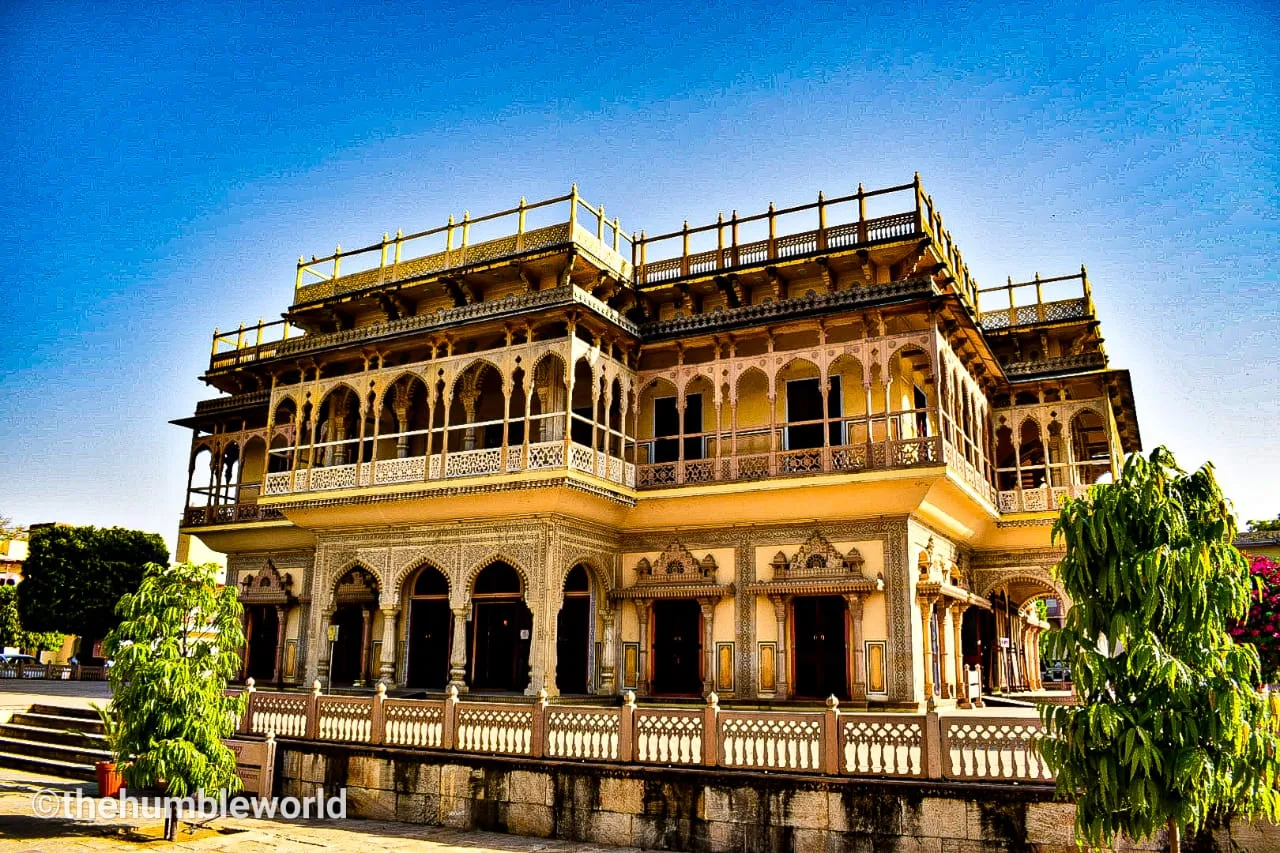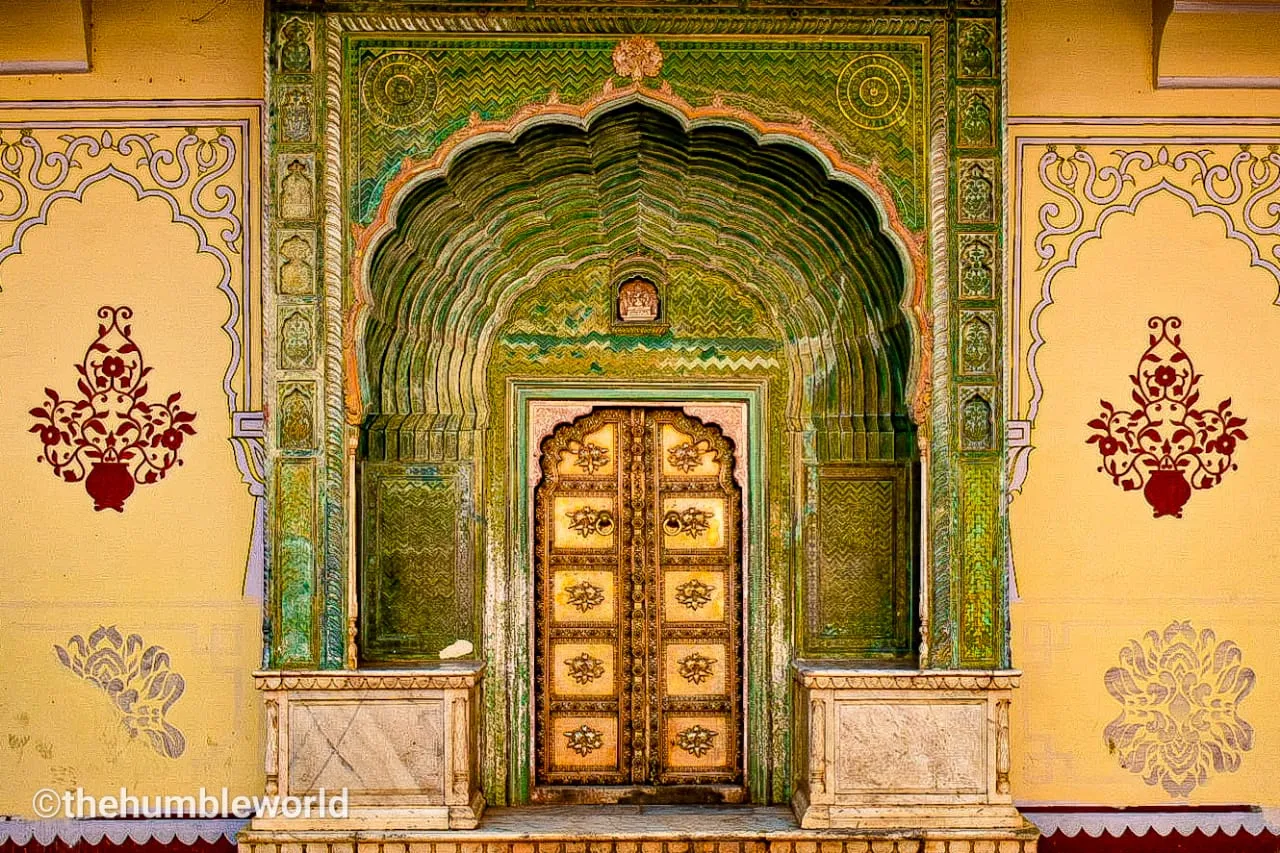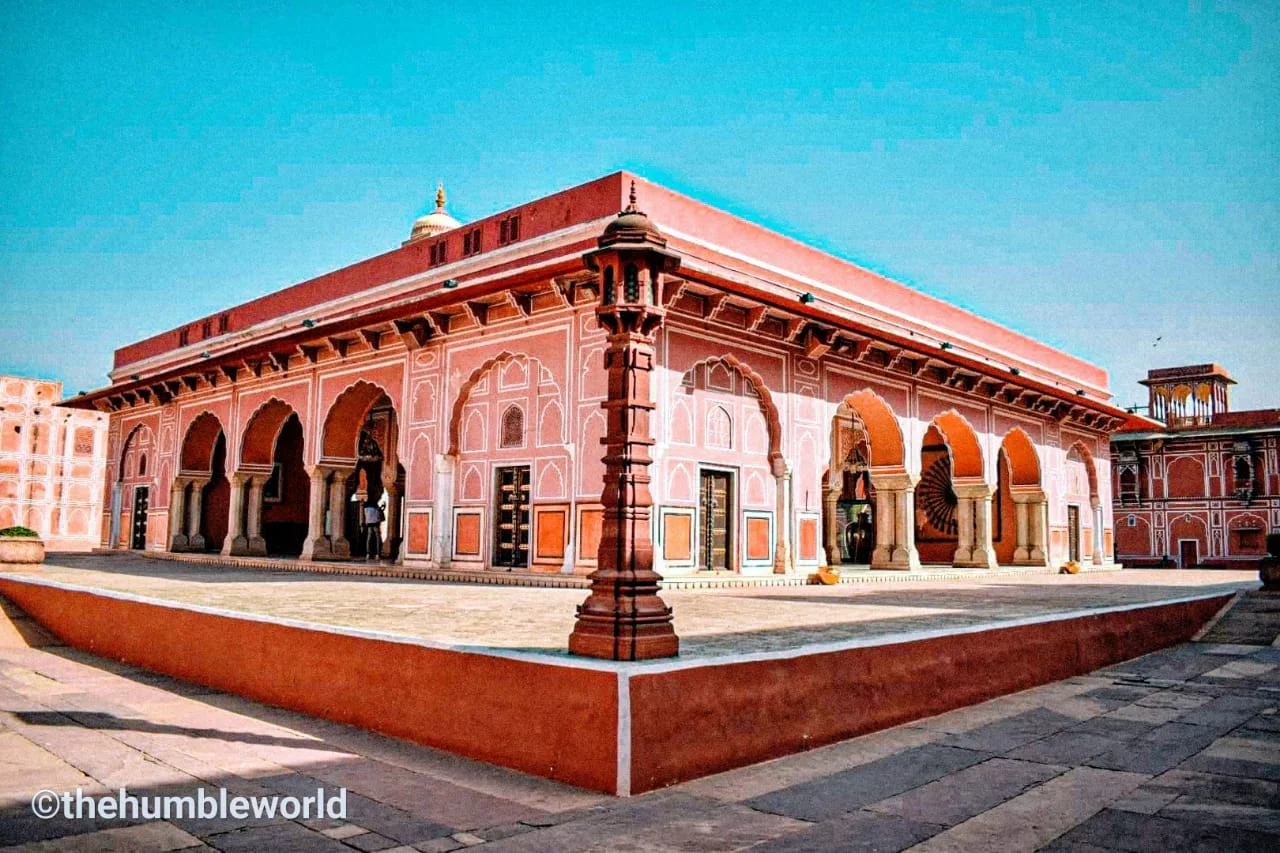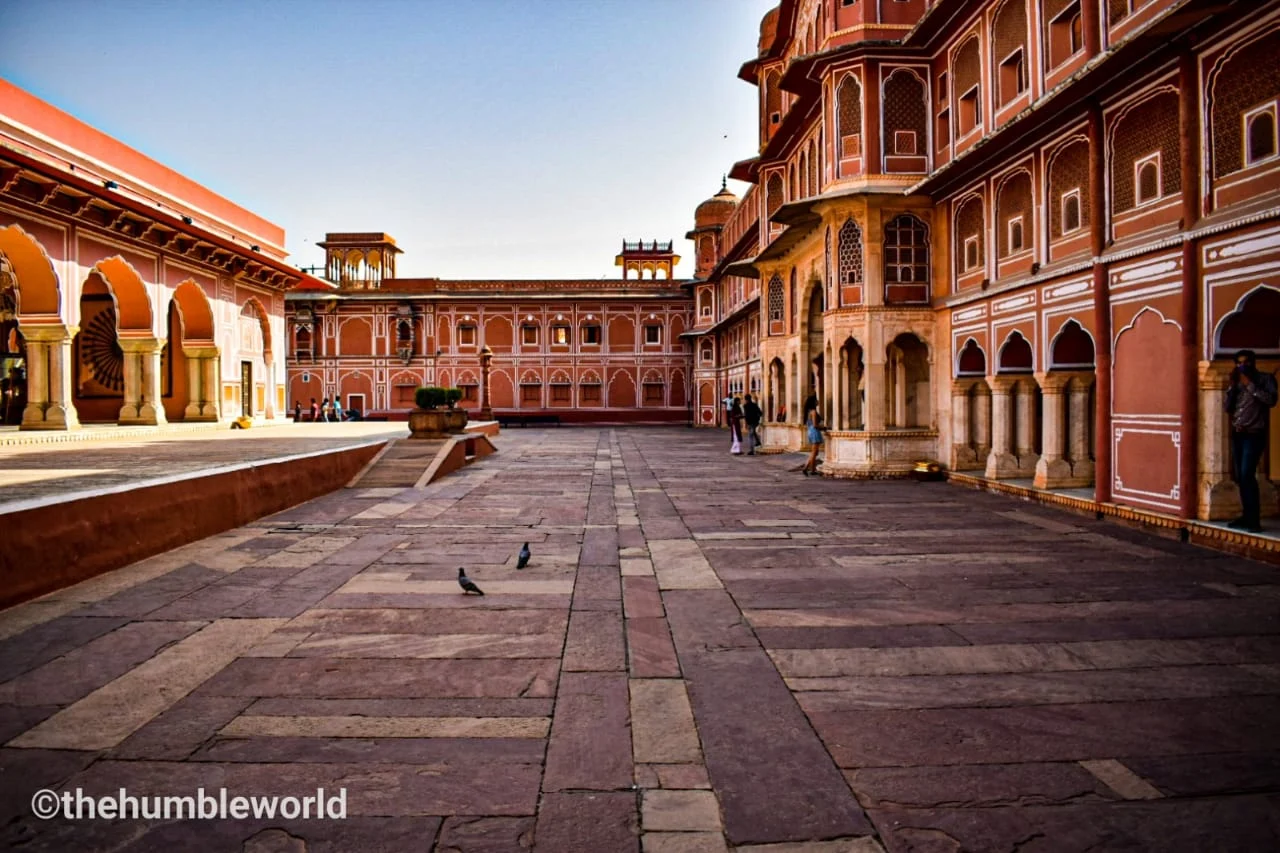The City Palace - Jaipur, History & Everything To Know
Being one of the many architectural wonders in Jaipur, The City Palace lies on the top places to visit, making it a significant landmark in Jaipur. The Palace is so beautiful that it will be worth making a visit inside it.
This most important palace in Rajasthan's history was the residence of Raja Sawai Man Singh once, which is being continued by his family. Still, the Royal families stay in the Palace. Few parts of the Palace are private only for the Royal family, and the rest is open for the Public.
 |
| City Palace Jaipur |
What is the History of The City Palace?
The Palace was constructed between 1729-1732, which sets an example of the rich beauty and heritage culture. The Palace was designed by a Bengali Architect, Vidhyadhar Bhattacharya. The Palace was constructed following the proper Vastushastra rules, one of the reasons to attract the tourists. The exclusive architecture of the Palace was started by Sawai Jai Singh II when he moved to Jaipur city from Amber because of the shortage of water supply there.
 |
| City Palace Courtyard |
The architecture of The City Palace?
There are gardens and Temples of different shapes and sizes inside the Palace premises. There are 3 entry gates - Tripoli Gate, Udai Pol Gate, and Virendra Pol Gate.
Tripoli Gate is open for Royal Families. Udai Pol and Virendra Pol is open for Public.
1. Udai Pol - Ticket counter, Baradari Restaurant, Washrooms, Drinking water. Parking.
2. Virendra Pol - Ticket counter, Audio guide facility reception, Washrooms.
 |
| Virendra Pol Gate which is open for public |
The Palace is a tremendous combination of Rajputi and Mughals, architecture. Let us move to the structure of the Palace from inside.
The City Palace from inside -
The Palace from inside is big with different Mahals, and gathering areas. Let me give you a short description of each one, one by one:
1. Chandra Mahal -
Chandra Mahal is a 7-storied building, with different names on each floor, Mukut Mandir, Chhavi Niwas, Shri Mandir, Ranga Mandir, Pitam Niwas and Sukh Niwas. There a beautiful peacock and many balconies, beautiful mirror work with floral decoration along with amazing paintings. The ground floor of Chandra Mahal is open as a museum, which has carpets, king's and queen's garments, and many other items.
Subh Niwas is finely decorated with paintings and has a dining hall. Chhavi Niwas was meant for resting King. There is a flag at the top.
 |
| Chandra Mahal, City Palace, Jaipur |
2. Mubarak Mahel -
This is the reception center, which has an amazing combination of Rajputi and Islamic art, also a touch of European architecture. This Mahel is now developed as a museum, which shows the collection of textiles, silk, and embroidered cloths, Sanganeri shawls, Pashmina shawls, golf suite of the King.
 |
| Mubarak Mahal which is now developed as a museum |
3. Pritam Niwas Chowk -
This is the inner compartment which has four gates, displaying different themes of four different seasons. All of the gates have peacock patterns design.
The northwest gate represents the autumn, dedicated to Lord Vishnu. The southwest gate decorated with flowers and petals, specifying summer, dedicated to Lord Shiva. The northeast gate is dedicated to Lord Ganesh, painted in Green for the Spring season. The southwest gate, dedicated to Devi, contains the patterns of flowers representing winter.
 |
| Green Gate in Pritam Niwas chowk |
4. Diwan-I-Aam -
This was the Public Hall, Sabha Niwas. The hall is nothing less than an art gallery, with Rajasthani and Mughal arts and paintings. The hall is of red and golden color and has a Golden Thorne, having an elephant design made of marble rock. This hall was for King's public meeting.
 |
| Diwan-I-Aam painted in red and golden color |
5. Diwan-I-Khas -
This was the Private hall of the King. It has 2 silver big vessels of 1.6 hight, capacity to hold 40000 liters. Both of the vessels are made of 14000 coins without even the slightest soldering. This is recorded in the Guinness Book of World Record, for the largest silver Vessel. This was made to carry Ganga Jal for the King when he visited England.
Tip - Try to have a guide with you, while visiting. The complete history of Maharaja will amaze you and make your visit successful.
 |
| Diwan-I-Khas which has 2 silver big vessels |
6. Maharani Palace -
This Palace was made for the queens, which is now displayed as a museum, where weapons are showcased. The ceiling of the Palace is shiny and made of gold plating material.
 |
| Pritam Niwas Chowk in City Palce, Jaipur |
That was a brief description of The City Palace.
Souvenir Shops at the City Palace
The city palace is a must-see in Jaipur and inside it, one can also buy things from souvenir shops which include local handicrafts, clothes, and famous Jaipur Mojris but bear in mind the things you will buy from here will be a bit expensive as compared to local shops which are outside of City Palace.
 |
| Souvenir shops in City Palace Jaipur |
Entry Ticket Rates of City Palace:
The ticket rates are below:
Indian Nationality:
Museum, which includes Palace Courtyard and Galleries - 200 INR
Composite Ticket, which includes Palace Courtyard, Galleries Jaigarh, Royal Cenotaphs - 300 INR
Museum at night - 500 INR
Foreign Visitors:
Composite Ticket, which includes Palace Courtyard, Galleries Jaigarh, Royal Cenotaphs - 700 INR
Museum at night - 1000 INR
 |
| City Palace entry ticket details for Indians and Foreigners |
Travel Tips for your visit to The City Palace:
1. Try to wear a comfortable dress and footwear, since you may have to walk for a long.
2. Try to follow all the rules, in a few areas photography is not allowed like in Diwan-i-Khas, and Mubarak Mahal.
3. Have a water bottle with you.
4. You will find many guides in the entrance gate itself, try to bargain and take one.
 |
| Beautiful Diwan-I-Khas inside City Palace |
Few Points To Know About The City Palace:
1. The Palace was built by Raja Jai Singh, the founder of Jaipur city.
2. Other than the main gate, there 4 other gates, which depict the four seasons and God/Goddess.
3. There are two parts of City Palace, one is open for the Public and visitors and the other is only for the Royal families, who still live in the Palace.
4. There are different packages in the tickets available based on costing also. You can choose any package based on time availability, and of course your interest.
5. You can visit Jantar Mantar, just in front of The City Palace, once you are done here.
6. Try to visit during Winter because Summer will be really Hot and you may not enjoy your tour.
7. The Palace is open every day except the Public and Government Holidays. So if you are visiting Jaipur on a long weekend, make sure to not end up here on Public Holidays.
 |
| City Palace Courtyard |
I am concluding this blog with a message that visiting The City Palace, is just like a journey, which will take you and amuse you with the Royal Heritage, Culture. You will get to know the history of Maharaja and Queen and their lifestyle.
I hope this will help you in planning your visit to The City Palace. If you are planning a 2-3 day trip to Jaipur, visit our blog - "Plan a Trip To Jaipur - A Complete 2 Day Tour Guide"














2 Comments
Thanks for sharing such an informative and detailed blogs. I am from Jaipur and still didn't know about the places u explore. Ur blogs will definitely help me to know my Jaipur more and more deep.
ReplyDeleteKeep it up 👍🏻
Glad it helped, Thank you so much 😊
Delete